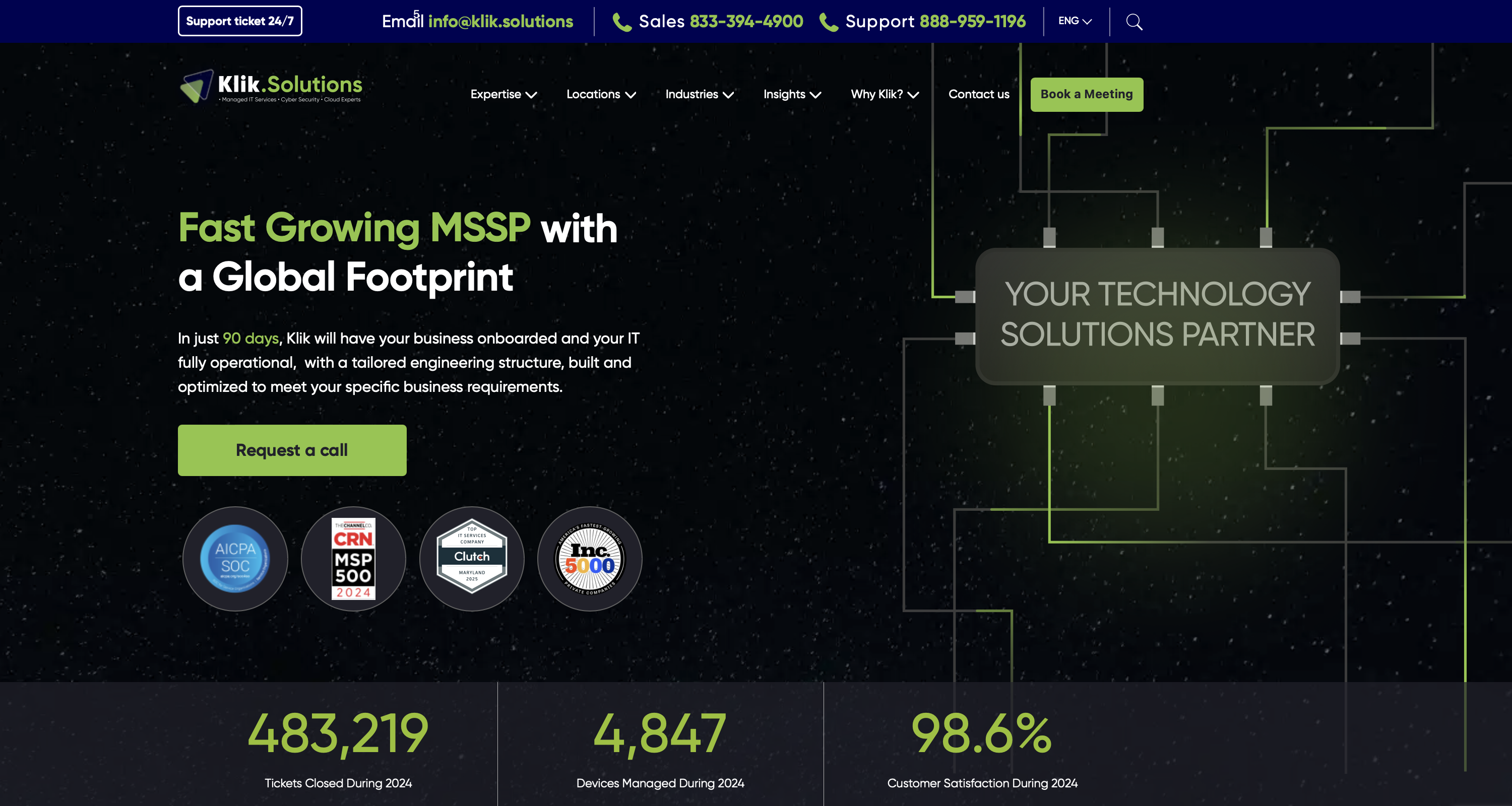What It Really Means to Have a Tech Partner (Not Just a Provider)

The CFO of a mid-sized logistics company called us. He was frustrated. His IT provider closed tickets fast enough, but every board meeting still ended with the same pain points: unpredictable costs, stalled cloud projects, and rising security risks.
The provider did their job—reset passwords, patched servers—but the business wasn’t moving forward. What he really needed wasn’t another technician. He needed a tech partner—someone who would sit at the table, understand strategy, and align technology with growth goals.
That’s the distinction too many businesses overlook, and it determines whether IT becomes a hidden cost—or a competitive advantage.
Provider vs. Partner: Why the Difference Matters for Your Business
The conversation about IT partner vs. provider isn’t just about services. It’s about accountability. A provider keeps the lights on. A partner helps you decide where those lights should shine next. Providers solve problems in the moment; partners anticipate the future and design technology to match your business trajectory.
For SMB owners and executives, the stakes are high. Staying with a provider often means reactive fixes, siloed tools, and little visibility into long-term impact. A partnership model shifts IT from a maintenance function into a driver of agility, resilience, and scale.

What an IT Provider Delivers
IT providers typically deliver support designed for stability, not strategy. Their model often looks like this:
- Help desks ready to troubleshoot day-to-day issues.
- Point solutions—email, backups, firewalls—each managed separately.
- Project work is scoped narrowly around migrations, hardware, or compliance audits.
This model isn’t inherently “bad.” For businesses with minimal complexity, it might even be enough. But for growing organizations, the limits show quickly. Providers measure success in uptime and closed tickets, not in workforce productivity, time-to-market, or reduced exposure to cyber threats. The relationship is transactional, not transformative.
What a True Partner Brings to the Table
Contrast that with what a true business technology partner delivers. Instead of viewing IT as a separate department or a set of contracts to manage, a partner embeds technology into the DNA of the business. The starting point isn’t “Which tools do you need?” but “Where is your company headed, and how do we use technology to accelerate that journey?”
That shift changes everything:
- Proactive roadmaps tied to your growth and risk profile: Instead of reacting to problems, a partner helps you anticipate them—building technology strategies that scale with your customer base, market expansion, or new compliance requirements. You’re never blindsided by outdated systems or unbudgeted crises.
- Unified systems that eliminate redundancy and streamline data flow: Providers may leave you juggling five platforms that don’t talk to each other. Partners bring cohesion—integrating tools and automating workflows so your people spend less time chasing data and more time creating value.
- Metrics that track business outcomes: A partner doesn’t just tell you how quickly tickets are resolved. They show you how technology is reducing onboarding time, cutting downtime, improving audit readiness, or enabling faster customer response—all metrics that translate directly to business performance.
- Regular strategy sessions where IT leadership sits with business leadership: This is where the real value happens. Partners join conversations about new product lines, acquisitions, customer service models, or expansion plans. They translate those business moves into technology roadmaps, ensuring IT decisions support the organization’s direction instead of lagging behind it.
In short, a provider manages today. A partner prepares you for tomorrow. The difference is that with a partner, IT is no longer a separate “function.” It becomes an embedded capability—integrated into every decision that drives performance and growth.

The Klik Difference
Klik Solutions designed its model for this very shift. We don’t operate as a vendor. We operate as partners through five interconnected systems built around collaboration, not just service.
- CORE — The backbone: endpoint management, backups, service management, and user productivity.
- CyberOps — 24/7 monitoring, detection, and resilience so your risk stays measurable and managed.
- Orbit — vCIO guidance, budget planning, vendor management, and KPI dashboards. The glue that aligns IT and business.
- Edge — The networks and devices where work happens: performance and reliability built in, not bolted on.
Elevate — Modernization and enablement: cloud, AI, automation, analytics, and adoption to create real business capability.
Together, these five systems form the architecture of a true managed IT partnership—seamlessly connecting operations with business strategy.
Benefits of a True Partnership
When you shift from a transactional IT provider to a true partner, the business impact is immediate and measurable:
- Simplified vendor management. Providers often leave you as the intermediary between multiple vendors. A partner takes ownership of the entire technology ecosystem. With a single point of accountability, contracts are streamlined, finger-pointing disappears, and you get one cohesive plan rather than piecemeal fixes.
- Stronger security posture. Cybersecurity isn’t a product; it’s a discipline. Partners create a living security program: identity management, monitoring, incident response, and governance aligned with your compliance requirements. This reduces breach risk, keeps regulators satisfied, and gives leadership confidence that threats are managed, not just reacted to.
- Strategic roadmaps that create clarity. By mapping 30-60-90 day initiatives alongside 1–3 year goals, partners create roadmaps that balance quick wins with sustainable investments. Leadership gets clarity, finance gets predictability, and employees get the tools they need—on time, not years too late.
- Scalable foundations that grow with you. Partners design with scalability in mind: standardized builds, cloud-ready infrastructure, automated workflows, and governance guardrails. Growth stops being risky and starts being repeatable.
- Better alignment between technology and business. Partnership converts IT from reactive service into strategic IT support—a foundation that makes your business faster, safer, and more adaptable.

Real-World Example — Treating Klik as a Partner, Not a Vendor
Imagine this scenario could be your reality!
Take the logistics client mentioned earlier. They had four IT vendors, each managing a different slice of the stack. Support was slow, cloud spending unpredictable, and compliance audits consumed entire teams.
Klik streamlined their environment by unifying delivery under CORE, CyberOps, and Orbit. Within months, cloud costs stabilized, onboarding time dropped from days to hours, and security reporting moved to an always-ready model. For the CFO, the difference was night and day: IT was no longer a distraction—it became a driver of efficiency and confidence.
That’s the power of a partnership mindset.
The Future of Tech Partnerships — Why Businesses That Embrace TSPs Win on Agility, Compliance, and Cost Efficiency
SMBs that continue with a reactive provider model will find themselves at a disadvantage. Mounting compliance requirements, sophisticated cyber threats, and cost volatility will punish businesses that lack visibility and proactive planning.
By contrast, those that embrace a tech solutions partner model position themselves to win on agility, resilience, and efficiency. With an accountable partner, security controls evolve continuously, budgets become predictable, and growth initiatives are supported with scalable foundations rather than patched together at the last minute.
The companies that thrive will be those with a single, trusted partner orchestrating every system, vendor, and initiative toward business outcomes. They won’t just react to change; they’ll anticipate it, adapt quickly, and turn challenges into opportunities.
Bringing It Together
The days of treating IT as a necessary cost are over. The businesses that win are the ones that leverage IT as a growth engine. Klik’s partnership model—anchored in our five-system approach—proves that difference every day.
If you’re ready to move beyond the break/fix mindset and gain a true partner in your success, the path is clear.
Want to explore how to become a Klik tech solutions partner? Reach out to book a no-obligation roadmap consultation!
FAQs

What’s the difference between a tech provider and a tech partner?
A provider is task-oriented—they focus on maintaining tools, closing tickets, and reacting when problems arise. A partner, by contrast, takes a strategic role. A true business technology partner aligns IT investments with long-term goals, creates proactive roadmaps, and stays accountable for outcomes like risk reduction, cost predictability, and workforce productivity. In other words, a provider fixes issues, while a partner helps your business grow, adapt, and compete.
Why should SMBs care about having a tech partner?
For SMBs, every technology decision has outsized impact. A technology partner transforms IT from a back-office utility into a catalyst for competitive growth. By integrating IT strategy with business goals, partners help smaller organizations punch above their weight—delivering enterprise-grade security, simplified vendor management, and scalable solutions without enterprise-sized budgets. That’s how SMBs turn technology into leverage instead of overhead.
Is a tech partner more expensive than a provider?
On the surface, it may seem like a partner would cost more. In practice, the opposite is often true. A partnership model consolidates overlapping vendors, reduces inefficiencies, and eliminates unplanned “emergency” costs. Predictable budgets, optimized licensing, and proactive planning mean lower total cost of ownership. With a managed IT partnership, you don’t just control costs, you create a financial model that grows alongside your business.
How does Klik tailor its partnership model to different industries?
Every industry has its own pressures—whether it’s HIPAA in healthcare, PCI DSS in retail, or uptime requirements in logistics. Klik adapts its five-system model (CORE, CyberOps, Orbit, Edge, Elevate) to match those realities. That means compliance frameworks are baked in, data governance is industry-specific, and technology roadmaps reflect the actual business drivers of each sector. This industry alignment ensures your IT strategy is relevant, practical, and future-ready.
Can I transition from my current IT provider to Klik without disruption?
Yes. Transitioning doesn’t have to mean downtime or risk. Klik uses a phased onboarding process: discovery and stabilization first, then standardization, followed by optimization. This ensures your systems keep running while the new model takes shape. The result is a smooth shift from reactive support to proactive partnership—without interrupting day-to-day business operations.


 Updated on August 22, 2025
Updated on August 22, 2025 